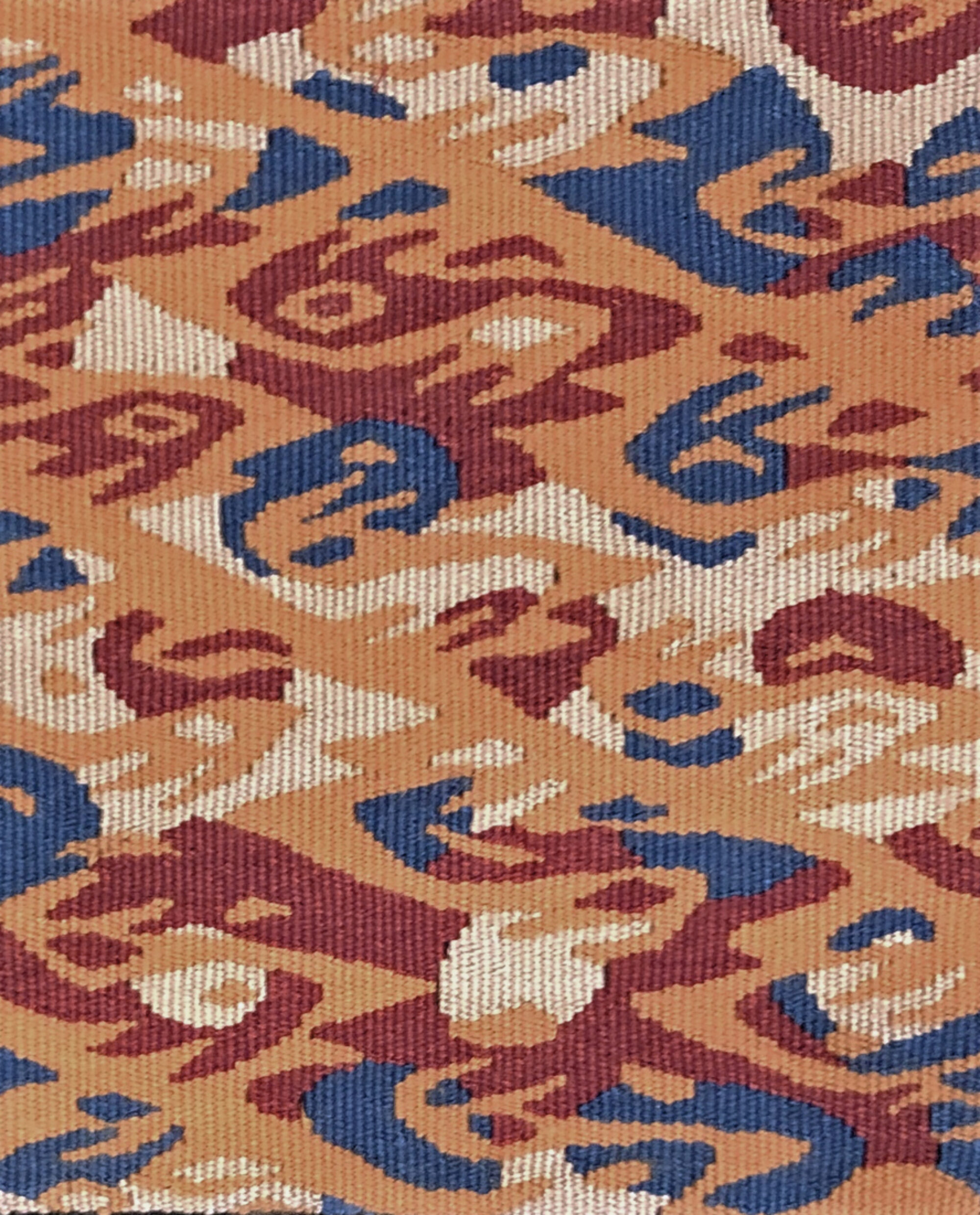This article was originally given as a talk for the Textile Society of America‘s Historic & Ancient Textiles Affinity Group.
STRATA
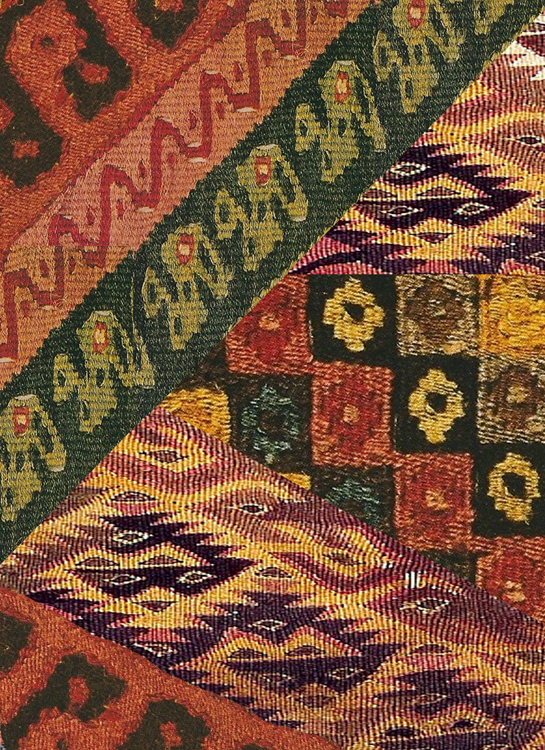
I chose Strata as the title of my talk because it reflects both the variety of images that I incorporate into my work, and their sourcing from a range of time periods. And, also, because the process of creating the designs involves a layering of the components, a layering that is permeable and malleable.
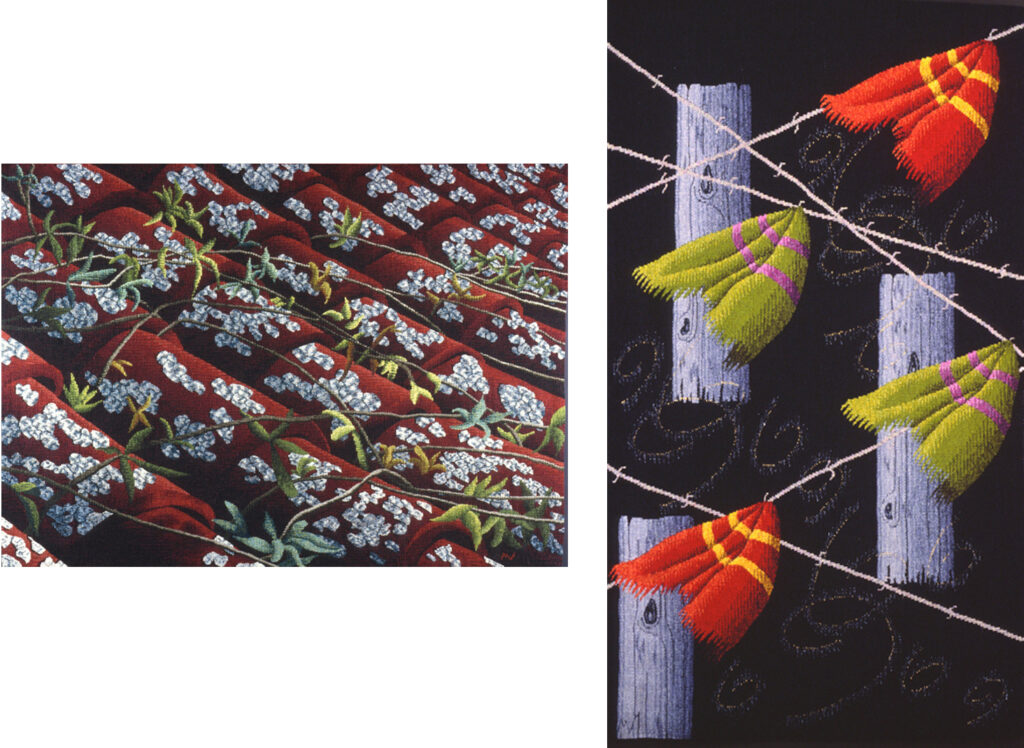
I am a tapestry weaver and have always been drawn to tapestries from the past. That manifests in my use of the woven techniques of European medieval tapestries and designs using pattern. My recent work references historical textiles more directly through the incorporation of borrowed patterns, motifs and/or details. These excerpts are combined with other image sources, such as drawings or photographs, to produce a layered composite in which the different components are merged together into one blended image. My goal is that the individual components in the design are recognizable, but that the ways in which I combine them creates something new.
“Reconsider 3“
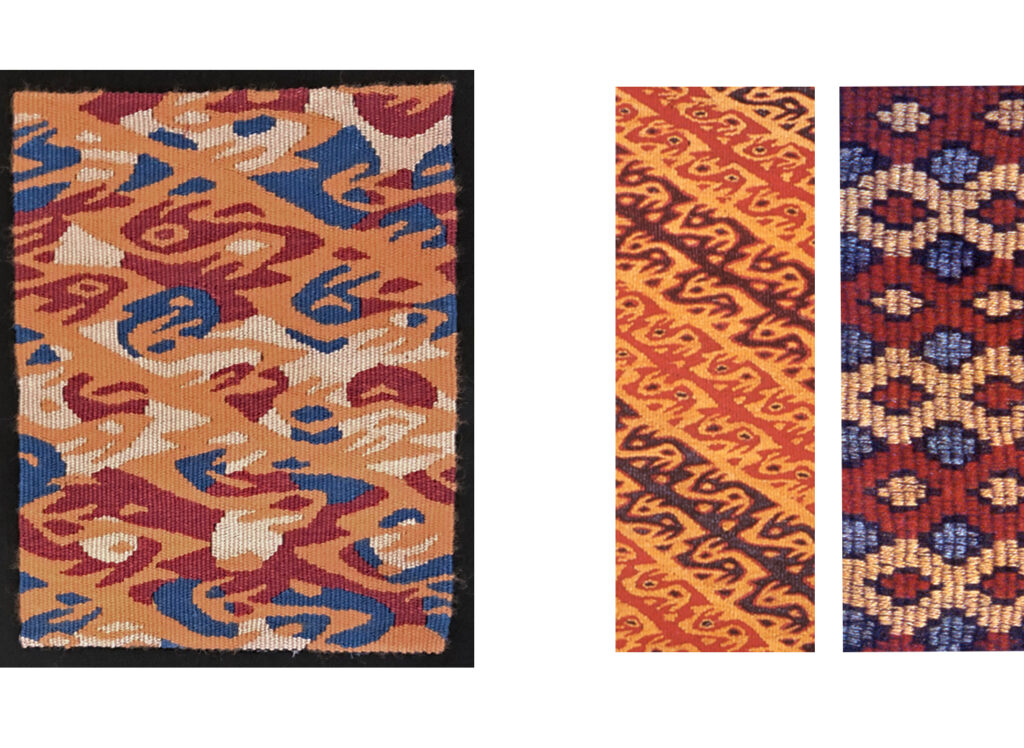
“Reconsider 3” includes details from two Andean textiles, a band with a repeated bird motif on the left and a geometric design on the right. The two images are combined in Photoshop. The textile with the bird motif sits on top of the geometric patterned tapestry. It is set to bleed through in the darker values so that the geometric patterned tapestry shows through in the darker areas of the bird motif tapestry
“Boundless“
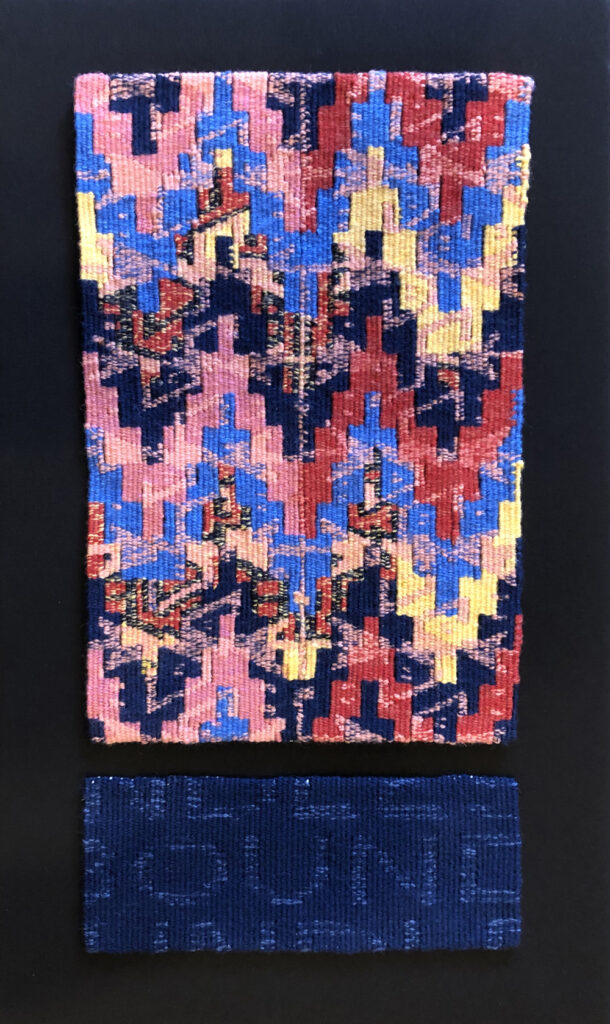
“Boundless,” consists of two separate tapestries mounted together. I wove the top piece first and, after taking a workshop called Mining Historic Textiles from Gerhardt Knodel, I began adding additional components to my designs that would extend, complicate, or even trouble the image and its possible meanings. For “Boundless” that involved thinking about the nature of repeat patterning and how engrossing it can be, especially when the repeat is not exact. Repeat patterns with “mistakes” is a design skill that Andean weavers perfected. The word boundless arose in my mind in conjunction with thinking about both the possible never ending nature of a repeat pattern and also the more cosmic, or universal implications of something that continues into infinity. I wove the word, fading into the background and running off the page, as a separate tapestry.
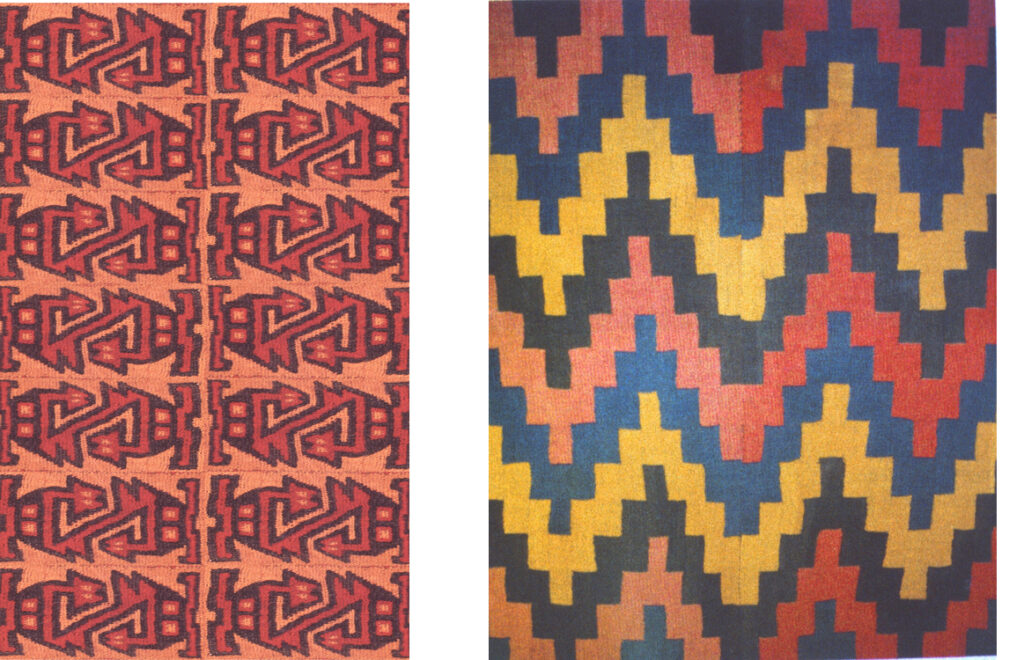
The source images for the upper tapestry are a stepped triangle pattern from a Nazca discontinuous warp and weft fabric, on the right, and a double headed serpent motif from an Andean double weave, on the left. In Photoshop, the Nazca textile sits on top of the double headed serpent. The serpent bleeds through in specific value ranges.
“Wander“
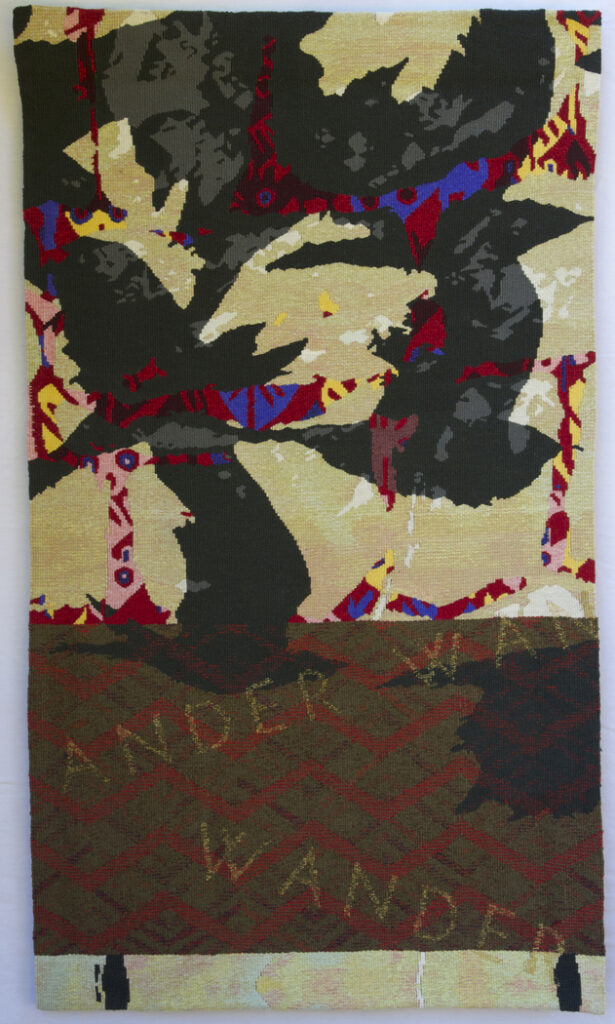
I am going to dive a little deeper into the design process as I discuss this tapestry, “Wander,” explaining, hopefully, somewhat clearly, how the image is built in Photoshop.
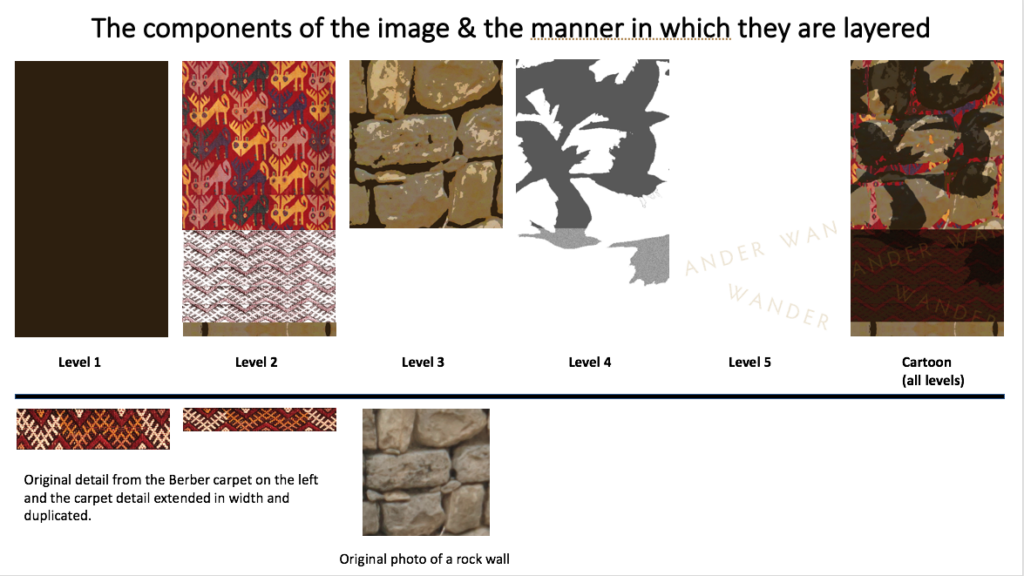
The image above shows the different layers of the image and how they interact.
Level 1 is the background layer. It is a dark gray.
Level 2 sits on top of Level 1. It has three components. On the top is a detail from an Andean fragment depicting Brockett Deer. Below the deer is a pattern I created by taking a detail from a Berber carpet, altering its proportions and repeating it. The original detail is below on the left and to the right of that you can see how I stretched it horizontally. In the complete design there are five repeats of the stretched carpet detail. The bottom section of Level 2 is a detail from the rocks in Level 3.
Level 3 sits on top of the Brockett Deer in Level 2. It is a detail from a photograph of a rock wall that has been modified in Photoshop with the Cutout Filter. The original detail from the photograph is below. The rock layer is set so that it bleeds through in the darker values, revealing the Brockett Deer in the cracks between the rocks.
Level 4 is a collage of two different drawings of birds that are repeated at different angles.
Level 5 is the word Wander. The text is set to dissolve into the layer beneath it, which is the Berber carpet detail and a little bit of the two sections of rock wall.
The image on the far right is the final cartoon.
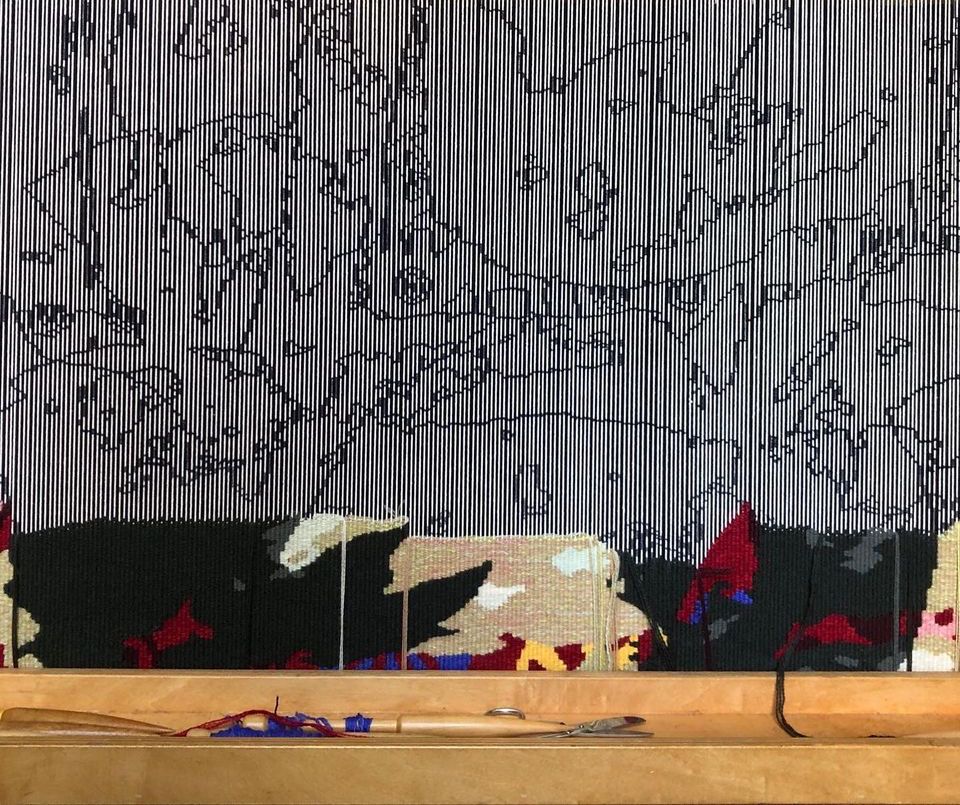
This last slide shows the tapestry in progress on the loom. I weave using the French techniques associated with Aubusson and the Gobelins Manufactory in Paris. I work on a vertical loom and ink the outlines of the cartoon onto the warp as a guide for the weaving.
By incorporating details from historic textiles into my designs I hope to highlight the rich history of textiles, while also situating the work within the material reality of tapestry’s identity as a woven cloth.
